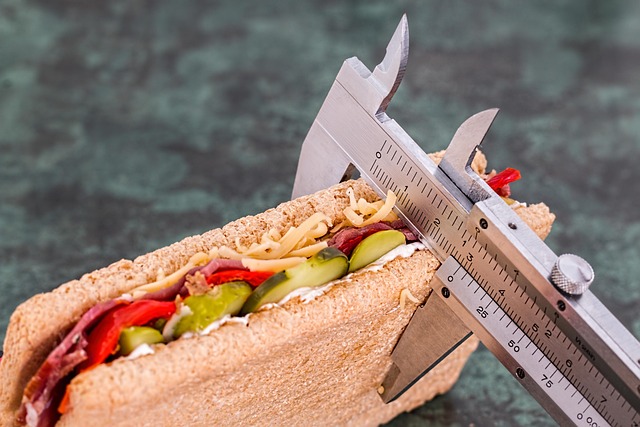Effective Meal Prep Strategies for Men's Weight Loss Journey
Meal preparation is a cornerstone strategy for men seeking sustainable weight loss. By planning and preparing meals in advance, men can control portions, maintain nutritional balance, and avoid impulsive food choices that often derail weight loss efforts. This approach not only supports calorie management but also saves time and reduces stress around daily food decisions.

Meal preparation has become a critical component in successful weight management strategies, particularly for men with specific nutritional and caloric needs. When implemented correctly, meal prepping eliminates the guesswork from daily food choices, creates structure around eating habits, and provides ready access to nutritious options even during busy schedules. For men looking to shed pounds while maintaining muscle mass and energy levels, strategic meal preparation offers a practical solution that addresses both nutritional requirements and lifestyle demands.
How to Start Meal Prepping for Weight Loss as a Man
Beginning a meal prep routine requires thoughtful planning rather than immediate action. Start by assessing your current eating patterns and identifying areas for improvement. Calculate your daily caloric needs based on your weight, height, activity level, and weight loss goals—typically, men require between 1,800-2,600 calories for moderate weight loss, though this varies significantly by individual.
Select one day each week (commonly Sunday) for preparation and invest in quality storage containers that portion meals appropriately. Begin with preparing just 2-3 days of meals until you establish a sustainable routine. The initial investment of time—typically 2-3 hours weekly—yields significant time savings throughout the week while eliminating decision fatigue around food choices.
Nutritional Considerations for Men’s Weight Loss Meal Prep
Men’s nutritional needs during weight loss differ somewhat from women’s, particularly regarding protein requirements. Most men benefit from consuming 0.8-1 gram of protein per pound of target body weight to preserve muscle mass during caloric deficit. This typically translates to 25-30% of daily calories from protein sources like lean meats, fish, eggs, and plant proteins.
Carbohydrates should focus on complex sources that provide sustained energy—whole grains, starchy vegetables, and legumes—comprising roughly 40-45% of caloric intake. Healthy fats from avocados, nuts, olive oil, and fatty fish should constitute the remaining 25-30% of calories. Portion control remains essential; using measuring cups and food scales initially helps develop visual portion awareness over time.
Time-Efficient Meal Prep Techniques for Busy Men
Many men avoid meal preparation citing time constraints, but efficient strategies can minimize time investment while maximizing results. The batch cooking approach—preparing large quantities of versatile proteins, grains, and vegetables that can be mixed and matched throughout the week—offers significant time savings. For instance, roasting several chicken breasts, preparing a large pot of brown rice, and steaming multiple servings of vegetables simultaneously can provide building blocks for various meals.
The “cook once, eat twice” method involves intentionally preparing extra portions during dinner to serve as the next day’s lunch. Sheet pan meals, where proteins and vegetables roast together on a single pan, reduce both active cooking time and cleanup. Slow cookers and pressure cookers further automate the process, allowing meal preparation to occur while handling other responsibilities.
Best Containers and Storage Practices for Meal Prep
Proper food storage significantly impacts meal prep success. Glass containers, while initially more expensive than plastic alternatives, resist staining and odor absorption while lasting longer. Portion-controlled containers with multiple compartments help maintain appropriate serving sizes and keep food components separate until consumption.
For optimal food safety and quality, cooked proteins typically remain safe for 3-4 days when properly refrigerated, while most cooked grains and vegetables maintain quality for 5-7 days. Labeling containers with preparation dates prevents confusion and potential waste. Some meals can be frozen for extended storage—particularly soups, stews, and casseroles—extending preparation efficiency even further.
Cost-Effective Meal Prepping Strategies for Weight Loss
Contrary to common perception, meal preparation can significantly reduce food expenditure while supporting weight loss goals. Strategic shopping focusing on seasonal produce, buying proteins in bulk when on sale, and incorporating more plant-based protein sources like legumes substantially lowers costs. Many men report savings of $50-100 weekly compared to regular takeout consumption.
A cost comparison of common meal scenarios demonstrates the financial advantage of preparation:
| Meal Option | Average Cost Per Meal | Weekly Cost (21 meals) | Monthly Savings vs. Takeout |
|---|---|---|---|
| Restaurant Takeout | $12-15 | $252-315 | $0 (baseline) |
| Meal Delivery Service | $9-12 | $189-252 | $63-126 |
| Home Meal Prep | $3-6 | $63-126 | $189-252 |
Prices, rates, or cost estimates mentioned in this article are based on the latest available information but may change over time. Independent research is advised before making financial decisions.
Sustainable Meal Prep Approaches for Long-Term Success
Many men initially approach meal preparation with excessive restriction, leading to eventual burnout and abandonment. Sustainable meal prepping incorporates planned flexibility—including strategic higher-calorie meals that satisfy cravings while maintaining overall caloric targets. The 80/20 approach, where approximately 80% of meals adhere strictly to nutrition goals while 20% allow more flexibility, has shown better long-term adherence rates.
Variety remains crucial for adherence; rotating protein sources, experimenting with different cuisines, and incorporating seasonal ingredients prevents menu fatigue. Additionally, many successful meal preppers incorporate a “preparation evolution” approach—starting with simpler recipes and gradually incorporating more complex techniques and flavor profiles as comfort with the process increases.
Meal preparation represents more than just a weight loss tactic—it’s a fundamental lifestyle adjustment that supports nutritional consistency. By controlling ingredients, portions, and timing, men can create eating patterns that support their weight management goals while accommodating their unique lifestyles and preferences. The initial learning curve quickly gives way to routine, making healthy eating the path of least resistance rather than a daily struggle against convenience options.
This article is for informational purposes only and should not be considered medical advice. Please consult a qualified healthcare professional for personalized guidance and treatment.




